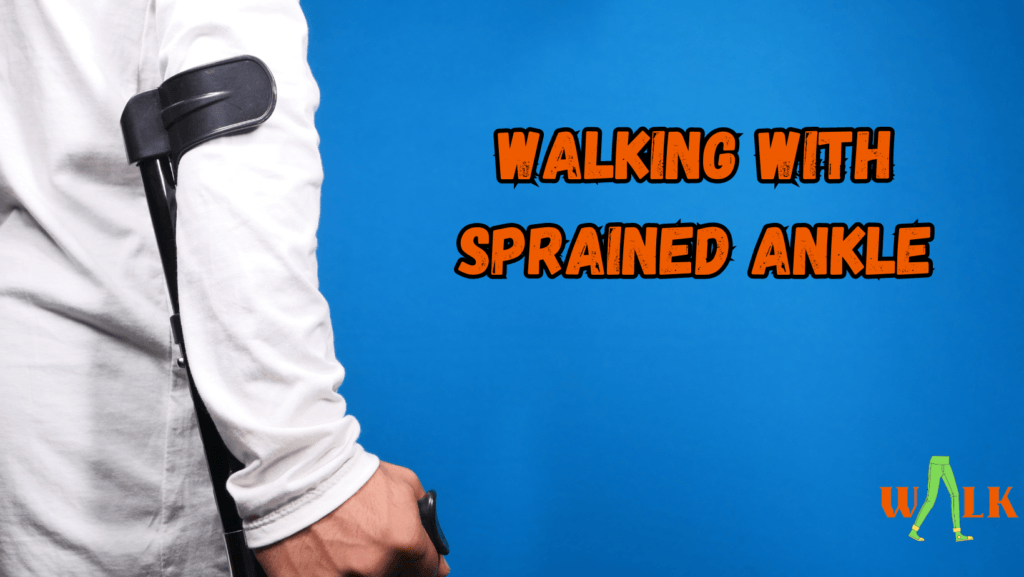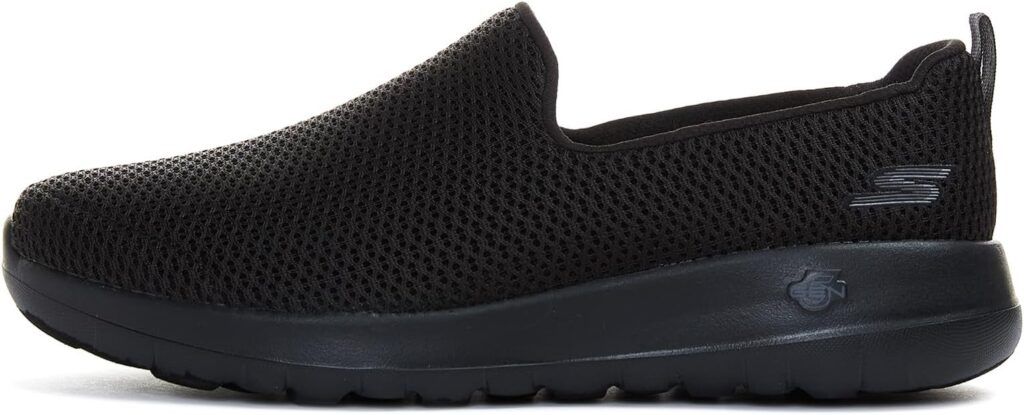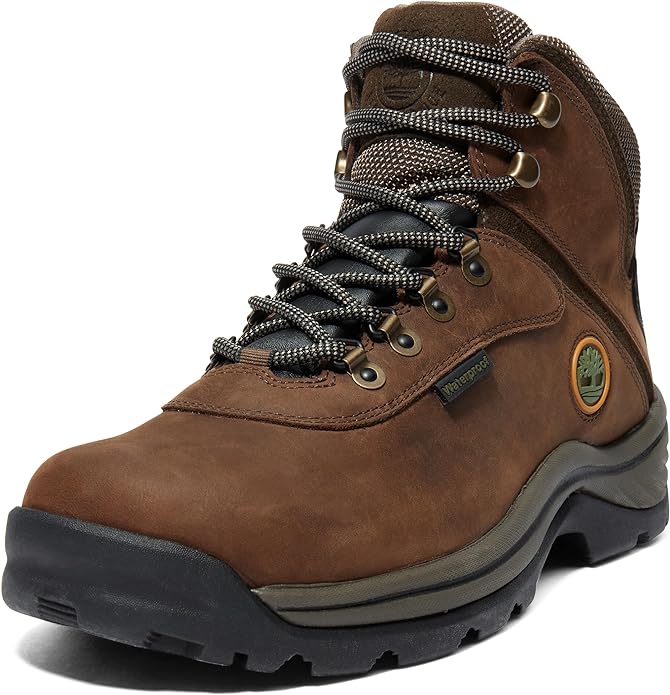This article will guide you on the journey to getting back on your feet by walking with sprained ankle. A sprained ankle, though a common injury, can be a real game-changer in our daily lives. Whether it happened during a friendly game of basketball, a misstep on an uneven sidewalk, or even just a simple twist during a morning jog, a sprained ankle can bring even the most active individuals to a halt.
Disclaimer: This post may contain affiliate links. For more information please refer to our Affiliate Disclosure.

Importance of the Topic
The importance of understanding how to recover from a sprained ankle cannot be overstated. Ankle sprains are not only painful but also notorious for their potential to become recurring issues if not treated and rehabilitated properly. Ignoring a sprained ankle or rushing the recovery process can lead to chronic instability, prolonged pain, and a higher risk of future injuries.
For athletes, outdoor enthusiasts, and anyone who relies on their mobility, regaining the ability to walk comfortably is not just a matter of convenience; it’s essential for maintaining an active and fulfilling lifestyle. Furthermore, proper care and rehabilitation can make the difference between a full recovery and lingering discomfort that affects your day-to-day activities.
What is a Sprained Ankle?
A sprained ankle occurs when the ligaments that surround and stabilize the ankle joint are stretched or torn. Ligaments are strong, fibrous bands that connect bones to one another, and in the case of the ankle, they help keep the joint stable during movements like walking, running, or jumping.
Imagine these ligaments as elastic bands that hold your ankle bones together. When you twist your ankle or roll it awkwardly, the force exerted can be strong enough to overstretch or tear these ligaments. This overextension or tearing results in a sprained ankle.
Common Causes of Sprained Ankles
Sprained ankles can happen to anyone, whether you’re an athlete or someone who rarely engages in physical activities. Here are some common causes:
- Missteps: Accidentally stepping off a curb, stepping into a hole, or tripping can all lead to a sprained ankle.
- Sports Injuries: Athletes who participate in sports that involve jumping, pivoting, or sudden changes in direction are at higher risk. Basketball, soccer, and volleyball players often experience ankle sprains.
- Uneven Terrain: Walking or running on uneven surfaces, such as trails or rocky paths, can increase the likelihood of rolling your ankle.
- High Heels: Wearing high-heeled shoes can destabilize your ankle, making it more prone to sprains.
- Previous Injuries: If you’ve had a sprained ankle in the past, you may be more susceptible to future sprains due to weakened ligaments.
Different Grades of Ankle Sprains
Ankle sprains are not one-size-fits-all; they come in different grades, each indicating the severity of the injury. These grades are generally categorized as follows:
- Grade I (Mild): In a Grade I sprain, the ligaments are stretched but not torn. You may experience mild pain, swelling, and some difficulty walking. Recovery is usually quicker.
- Grade II (Moderate): Grade II sprains involve partial tearing of the ligaments. Symptoms are more pronounced, including moderate pain, swelling, and difficulty putting weight on the ankle. Recovery may take several weeks.
- Grade III (Severe): This is the most serious grade, involving a complete tear of one or more ligaments. The pain is intense, and the ankle is highly unstable. Severe swelling and bruising are common, and recovery may require several months, along with rehabilitation and possibly surgery.
Understanding the grade of your ankle sprain is crucial because it dictates the appropriate course of treatment and rehabilitation. It’s essential to consult a healthcare professional for an accurate diagnosis and treatment plan tailored to your specific injury.
Step-by-Step Guide to Walking After a Sprained Ankle
- Assess Your Readiness: Before attempting to walk, evaluate your ankle’s condition. Ensure that pain, swelling, and tenderness have significantly reduced, and you can move your ankle without severe discomfort.
- Use Crutches or a Mobility Aid: Initially, it’s advisable to use crutches or a mobility aid like a walker or cane. These aids help reduce the weight and pressure on your injured ankle, preventing further strain.
- Start with Partial Weight-Bearing: Begin by putting a small amount of weight on the injured ankle while using your crutches or aid for support. Gradually increase the amount of weight you put on the ankle as your comfort allows.
- Practice Gentle Range of Motion Exercises: Perform ankle range of motion exercises recommended by your healthcare provider or physical therapist. These exercises help improve flexibility and reduce stiffness.
- Strengthening Exercises: As your ankle’s strength improves, incorporate strengthening exercises into your routine. These exercises can include ankle circles, toe taps, and resistance band exercises to target the muscles that support your ankle joint.
- Gradual Progression: Slowly increase the amount of time you spend walking without assistance. Start by taking short, controlled steps and gradually extend the distance you walk each day.
- Pay Attention to Pain: Listen to your body and be mindful of any pain or discomfort. If you experience significant pain during or after walking, it’s essential to stop and rest to avoid exacerbating the injury.
- Supportive Footwear: Choose supportive footwear with good arch support and cushioning. Proper shoes can provide stability and reduce the risk of reinjury.
- Maintain Balance and Stability: Work on balance and proprioception exercises. These exercises help improve your ability to maintain stability and prevent future ankle injuries.
Related: How Do Walking Boots Work and Support You in Your Walking Adventures
Significance of Taking It Slow and Avoiding Reinjury
The most crucial aspect of returning to walking after a sprained ankle is taking it slow and avoiding reinjury. Rushing the process can lead to setbacks and prolonged recovery times. Here’s why it’s essential to proceed with caution:
- Avoiding Reinjury: An ankle that has been sprained is more susceptible to future sprains. Repeated injuries can result in chronic ankle instability, which can significantly impact your mobility and quality of life.
- Allowing Healing: Adequate time and rest are necessary for the ligaments to heal properly. Pushing too hard too soon can disrupt this healing process and lead to long-term issues.
- Preventing Complications: Rushed rehabilitation may cause compensatory movements that affect other parts of your body, leading to pain and discomfort in areas such as the knee or hip.
Remember that every individual’s recovery timeline is different, and it’s essential to follow the guidance of your healthcare provider or physical therapist. They can tailor a specific plan to your needs and monitor your progress.
Treat Yourself to These Must-Have’s

Skechers Women’s Go Walk Joy Sneaker

Columbia Women’s Newton Ridge Lightweight Waterproof Shoe Hiking Boot

KEEN Men’s Targhee 2 Low Height Waterproof Hiking Shoes

Timberland Men’s White Ledge Mid Waterproof Hiking Boot
Disclaimer: This post may contain affiliate links. For more information please refer to our Affiliate Disclosure.
Addressing the Emotional Challenges
Dealing with a sprained ankle can be emotionally challenging. It’s normal to feel frustration, impatience, and even moments of despair during the recovery process. Here are some common emotional challenges and how to address them:
- Frustration and Impatience: It’s natural to want to return to your normal activities as soon as possible. However, pushing too hard too soon can lead to setbacks. Instead, set realistic expectations and recognize that healing takes time.
- Loss of Independence: If you’ve relied on your mobility for daily tasks, being suddenly limited can be emotionally difficult. Seek help when needed, and remember that asking for assistance is a sign of strength, not weakness.
- Fear of Reinjury: The fear of reinjuring your ankle can be overwhelming. To overcome this fear, focus on the progress you’ve made, follow your rehabilitation plan, and trust in your body’s ability to heal.
Staying Motivated and Maintaining a Positive Mindset
Maintaining motivation and a positive mindset is essential for a successful recovery. Here are some strategies to help you stay on track:
- Set Achievable Goals: Break your recovery into smaller, achievable goals. Celebrate each milestone, whether it’s regaining flexibility or walking without assistance.
- Visualize Success: Spend time visualizing your full recovery. Visualization can boost your confidence and motivation.
- Stay Connected: Share your progress with friends and family. Having a support system can provide encouragement and motivation.
- Mindfulness and Relaxation: Practice mindfulness and relaxation techniques to manage stress and anxiety. Yoga, deep breathing exercises, and meditation can help you stay calm and focused.
- Focus on What You Can Control: While you may not be able to control the pace of your healing, you can control your attitude and efforts. Focus on what you can do to aid your recovery.
Remember, your journey to recovery is unique, and setbacks are a part of the process. Stay focused on your goals, seek support when needed, and know that you have the inner strength to overcome the challenges that come your way. Your sprained ankle is just a chapter in your story, not the end of it.
Conclusion
Recovering from a sprained ankle is undoubtedly a journey filled with physical challenges, but also, emotional hurdles and triumphs.
Frustration, impatience, and fear of reinjury are all common emotions you may encounter along the way. But armed with knowledge and a positive mindset, you can overcome these challenges and emerge stronger than before.
Stay motivated by setting achievable goals and celebrating every step of progress. Visualize your full recovery, and surround yourself with a supportive network of friends and family. Practice mindfulness and relaxation techniques to manage stress and anxiety, and focus on what you can control – your attitude and efforts.
In closing, your sprained ankle is not the end of your journey; it’s a temporary detour on the road to a stronger, healthier you. Trust the process, have faith in your body’s ability to heal, and cherish the lessons you learn along the way. With patience, dedication, and a positive outlook, you’ll soon find yourself not just back on your feet but thriving in all aspects of life. Your recovery is a testament to your resilience, and you are stronger than you ever imagined.
FAQs (Frequently Asked Questions)
When it comes to sprained ankle recovery, it’s common to have questions and concerns. In this section, we’ll address five frequently asked questions related to sprained ankle recovery and provide clear and concise answers to help you on your journey to healing.
1. How long does it take to recover from a sprained ankle?
Recovery time varies depending on the severity of the sprain. A mild sprain (Grade I) may take a few weeks, while a moderate sprain (Grade II) may require several weeks to a couple of months. Severe sprains (Grade III) can take several months, and rehabilitation may be necessary for a complete recovery.
2. Can I walk on a sprained ankle?
It’s essential to follow your healthcare provider’s guidance. In most cases, you should avoid putting full weight on the sprained ankle initially and may need to use crutches or a brace. As your ankle heals and gains strength, you’ll gradually reintroduce weight-bearing.
3. Is surgery required for a sprained ankle?
Surgery is typically reserved for severe cases where there is a complete ligament tear or other complications. Most sprained ankles can heal with conservative treatment, including rest, physical therapy, and immobilization.
4. How can I prevent future ankle sprains after recovery?
To reduce the risk of future ankle sprains, focus on ankle-strengthening exercises, maintain good overall fitness, wear appropriate footwear for your activities, and be cautious on uneven terrain. Physical therapy and balance exercises can also help improve ankle stability.
Related: How Do Walking Boots Work and Support You in Your Walking Adventures
5. When is it safe to return to sports or strenuous activities after a sprained ankle?
Returning to sports or vigorous activities should be gradual and under the guidance of a healthcare professional. Typically, you can return when you have regained full range of motion, strength, and stability in your ankle. It’s essential not to rush the process to avoid reinjury.
Remember that these answers provide general guidance, but individual cases may vary. Always consult with your healthcare provider for personalized advice and a tailored treatment plan based on the specifics of your sprained ankle.
